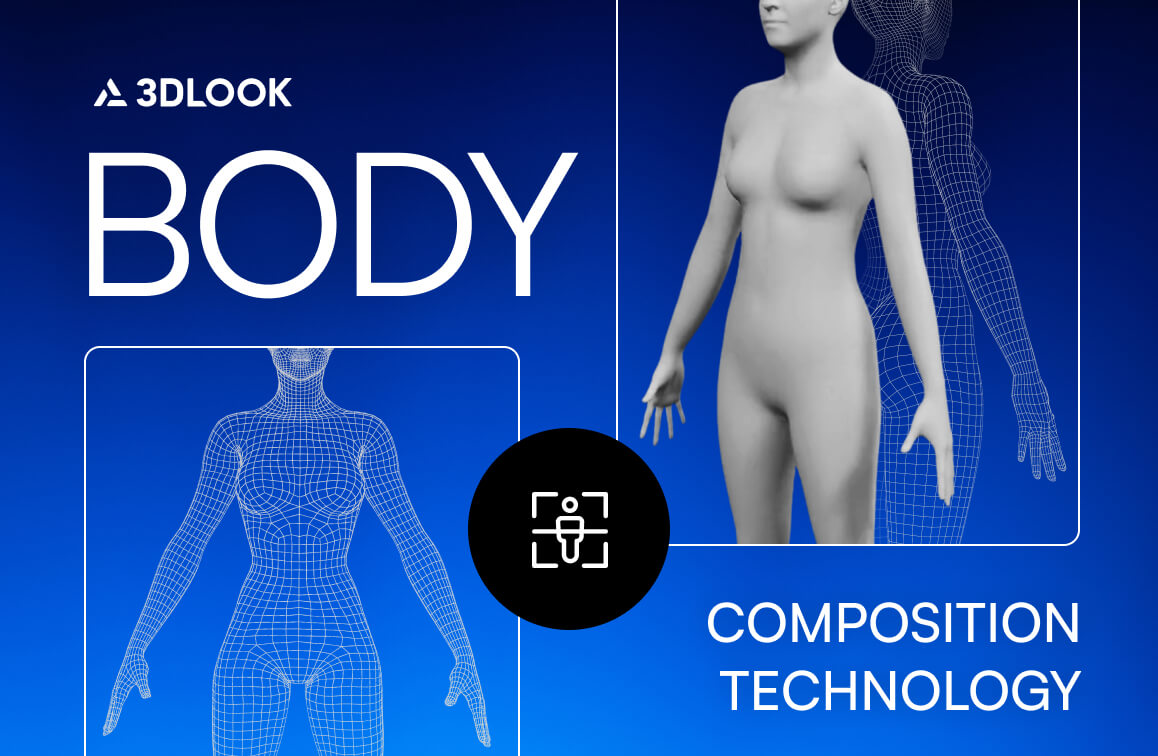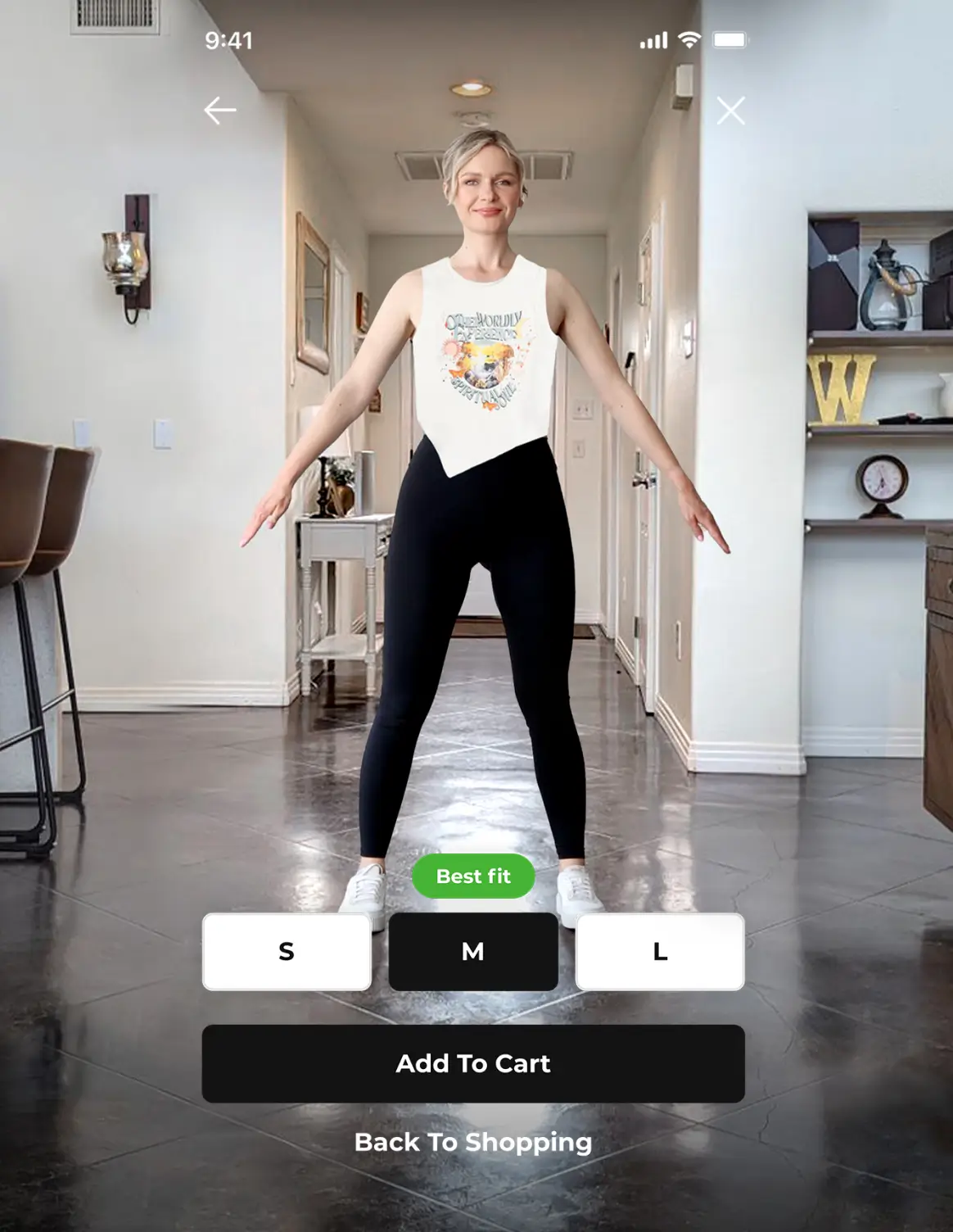With 40.3% of U.S. adults now obese according to the latest CDC data, and one in eight people globally living with obesity, the need for accessible, accurate body composition measurement has never been more critical.
Two distinct approaches have emerged as leaders in their respective domains: InBody’s clinically-validated bioelectrical impedance analysis and 3DLook’s AI-powered mobile body scanning.
InBody: The Clinical Standard
InBody has established itself as the gold standard in bioelectrical impedance analysis (BIA), with over 5,100 clinical study validations supporting its accuracy and reliability. The Korean company’s professional-grade devices are trusted by healthcare providers, research institutions, and high-end fitness facilities worldwide for their comprehensive body composition insights.
3DLook: The Mobile Innovation
3DLook represents the advancement of mobile body measurement technology, leveraging artificial intelligence and computer vision to deliver 96-97% accuracy for body measurements using only smartphone cameras.
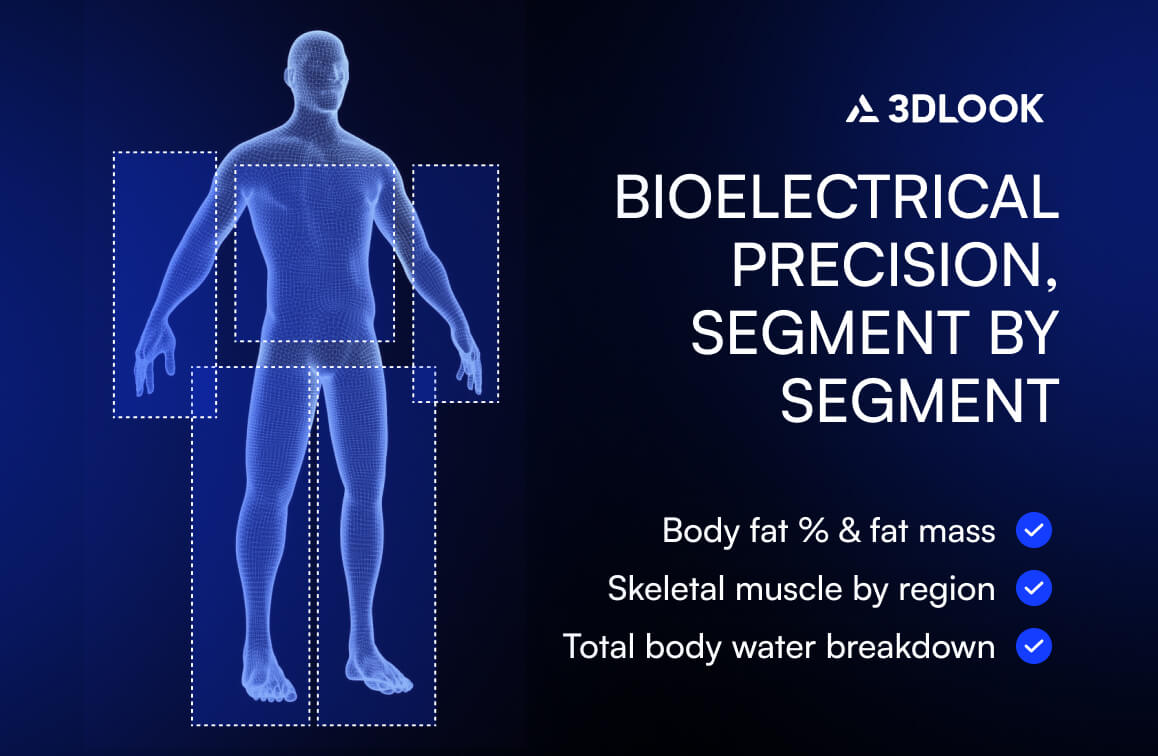
How Each System Works
InBody: Bioelectrical Impedance Analysis
InBody’s technology foundation rests on Direct Segmental Multi-frequency Bioelectrical Impedance Analysis (DSM-MFBIA), a sophisticated approach that treats the human body as five distinct cylinders: left arm, right arm, torso, left leg, and right leg. This segmental analysis provides far more accurate measurements than traditional whole-body impedance methods.
The Technical Process:
The system sends multiple frequencies of electrical current through the body, ranging from 1kHz to 1000kHz depending on the model. Different body tissues conduct electricity at varying rates based on their water content: muscle and blood (high water content) offer low resistance, while fat tissue and bone (low water content) provide higher resistance.
Key Measurements Provided:
- Body fat percentage and total fat mass
- Skeletal muscle mass with segmental breakdown
- Total body water (separated into intracellular and extracellular components)
- Segmental analysis comparing arms, legs, and trunk independently
3DLook: AI-Powered Visual Body Analysis
3DLook’s approach represents a fundamental departure from bioelectrical measurement, instead leveraging computer vision and machine learning to analyze body composition through visual data processing.
The AI-Driven Process:
Users capture two smartphone photos (front and side views) guided by voice instructions and gyroscope-controlled positioning. The proprietary neural networks, trained on hundreds of thousands of authentic user photos and manually measured subjects, identify body landmarks and create probability maps for precise measurement extraction.
Comprehensive Measurement Suite:
- Over 80 precise body measurements including all major circumferences
- Fat percentage calculations through advanced body composition algorithms
- Weight prediction with 89% accuracy and average 3.5% error rate
- Progress tracking with 3D visualization capabilities
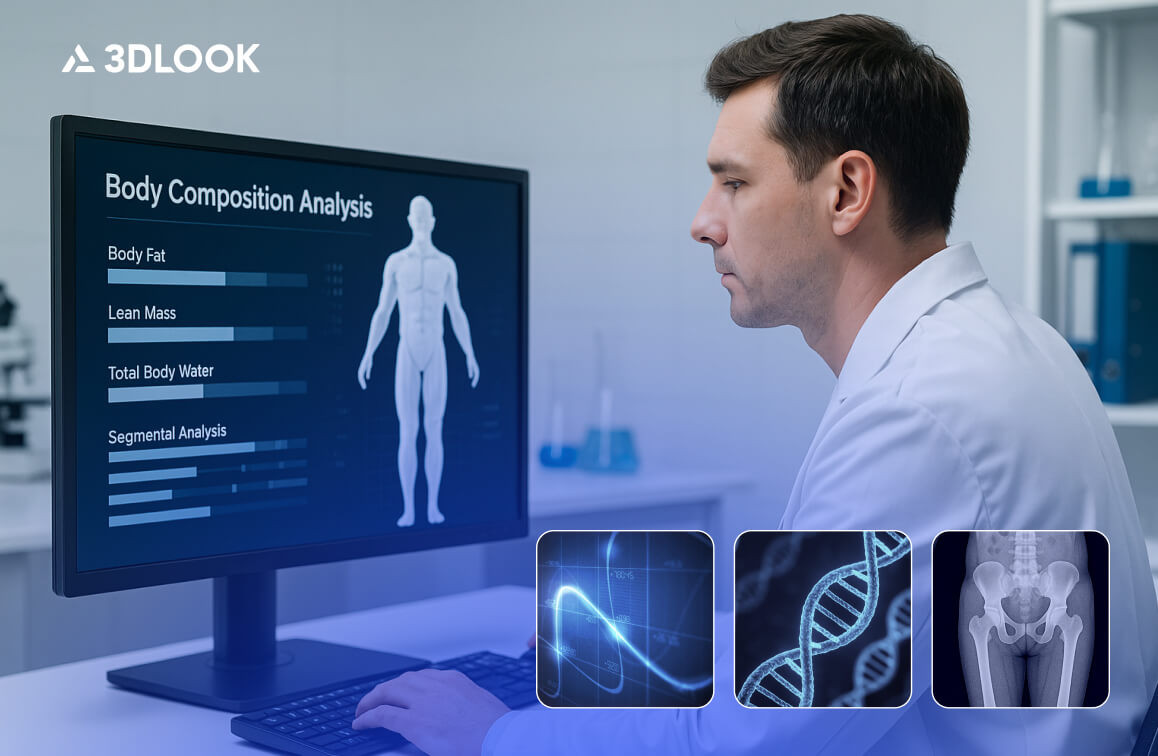
Accuracy and Validation
InBody’s Clinical Foundation
InBody’s reputation rests on extensive clinical validation, with research published in over 5,100 peer-reviewed studies. Independent research consistently demonstrates high correlations with reference methods, particularly achieving 0.99 correlation to DEXA for lean body mass measurements in normal weight adults.
However, accuracy comes with important caveats that affect real-world implementation. BIA is considered reasonably accurate for measuring groups, of limited accuracy for tracking body composition in an individual over time, but is not considered sufficiently accurate for recording of single measurements of individuals. Studies reveal systematic biases when compared to dual-energy X-ray absorptiometry (DXA), typically underestimating body fat by approximately 3%.
Moderate exercise before BIA measurements can cause overestimation of fat-free mass and underestimation of body fat percentage due to reduced impedance.
3DLook’s IEEE-Certified Performance
3DLook achieved a significant milestone when IEEE (Institute of Electrical and Electronics Engineers) certified its technology as meeting ISO 20685-1 standards for digital body scanning. The comprehensive research involved comparing traditional anthropometry experts, hardware body scanners, and mobile scanning solutions across compatibility, repeatability, and compliance metrics.
Findings:
- Repeatability error less than 2%, meeting all ISO 20685-1 requirements
- 96-97% accuracy for body measurements with over 95% repeatability consistency
- No systematic bias related to environmental conditions or user preparation
- Margin of error below 2%, approximately 5 times better than conventional measurement scales
The IEEE research particularly highlighted 3DLook’s consistency advantage. While human measurements can vary due to technique, fatigue, and subjective judgment, 3DLook’s AI-driven approach maintains consistent accuracy regardless of external factors.

User Experience and Requirements
InBody: Professional Environment Requirements
InBody devices require significant infrastructure investment and controlled measurement protocols. Professional-grade equipment ranges from $3,000 for basic models to over $15,000 for research-grade units, not including installation, training, and ongoing maintenance costs.
Operational Requirements:
- Dedicated measurement space with consistent environmental conditions
- Staff training for proper electrode placement and result interpretation
- Strict pre-measurement protocols: no exercise (>48 hours), no alcohol (>24 hours), no caffeine, food, or beverages (>10 hours)
- Appointment scheduling to accommodate preparation requirements
The measurement process itself is quick (30 seconds), but the preparation requirements and professional supervision needs create significant barriers to frequent monitoring and spontaneous usage.
3DLook: Universal Mobile Access
3DLook’s browser-based solution eliminates virtually all barriers to body composition measurement~~, capitalizing on the mobile health revolution where global mobile subscribers continue expanding rapidly. The technology works on any smartphone with a standard camera, requires no app downloads, and operates effectively across diverse environmental conditions.
User Experience Advantages:
- Zero preparation requirements – measurements can be taken anytime, anywhere~~, addressing the critical need in a market where 52% of smartphone users gather health-related information on their phones
- Voice-guided process takes under 60 seconds with automatic quality validation
- Universal compatibility across smartphones, lighting conditions, and backgrounds
- Immediate results with 3D visualization for intuitive progress tracking
- Multiple delivery methods including SMS, email, QR codes, and website widgets
The hands-free, browser-based approach means users can independently obtain accurate measurements without any third-party assistance, making it ideal for remote health monitoring and consumer-facing applications. This accessibility advantage becomes particularly important as 80% of Americans favor remote patient monitoring and more than half strongly support incorporating it into medical care services.
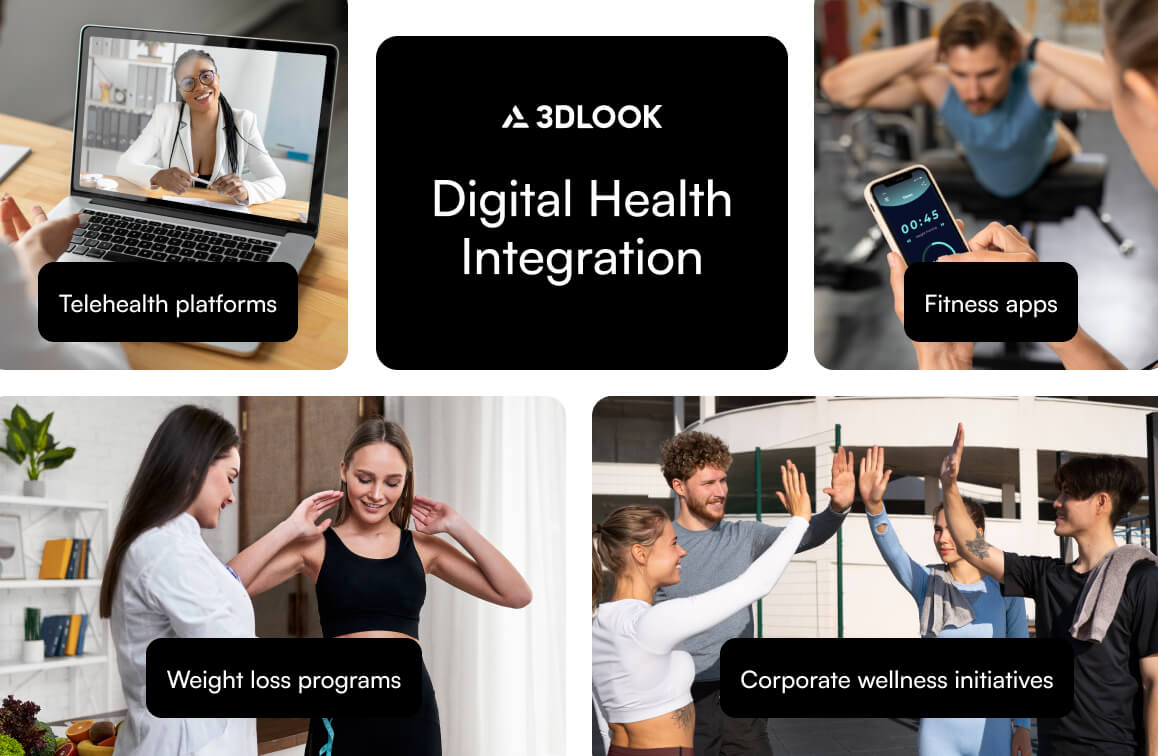
Business Applications
InBody in Professional Settings
InBody’s strength lies in controlled professional environments where detailed bioelectrical analysis provides clinical value beyond basic body composition.
Healthcare Applications:
- Medical facilities conducting comprehensive body composition assessments for disease management
- Research institutions requiring validated measurement protocols for clinical studies
- Rehabilitation centers tracking patient recovery through detailed muscle mass analysis
- Specialized applications like pediatric growth monitoring and sarcopenia diagnosis
High-End Fitness Implementation:
- Premium gyms offering InBody scans as member retention and differentiation tools
- Personal training studios providing detailed client assessments to justify premium pricing
- Sports performance facilities monitoring athletes with precise muscle mass tracking
- Corporate wellness programs in companies with on-site fitness facilities

3DLook for Modern Business Needs
3DLook’s scalability and accessibility make it ideal for businesses requiring widespread measurement capabilities without infrastructure constraints~~, perfectly aligning with current market trends where gyms offering hybrid fitness solutions continue showing strong growth, with consumers increasingly preferring hybrid models.
Digital Health Integration:
- Telehealth platforms enabling remote patient monitoring without equipment investment, serving the 88% of patients who reported having access to remote healthcare in the past year
- Fitness apps requiring body composition tracking for millions of users simultaneously, capitalizing on the rapidly growing fitness app market
- Weight loss programs leveraging visual progress tracking to improve user retention
- Corporate wellness initiatives allowing easy employee participation regardless of location
Fitness Technology Applications:
- Integration with existing health platforms through flexible API/SDK architecture, serving the 80% of physicians who use smartphones and medical apps
- Wearable device ecosystems requiring comprehensive body measurement data
- Virtual personal training services providing detailed progress tracking
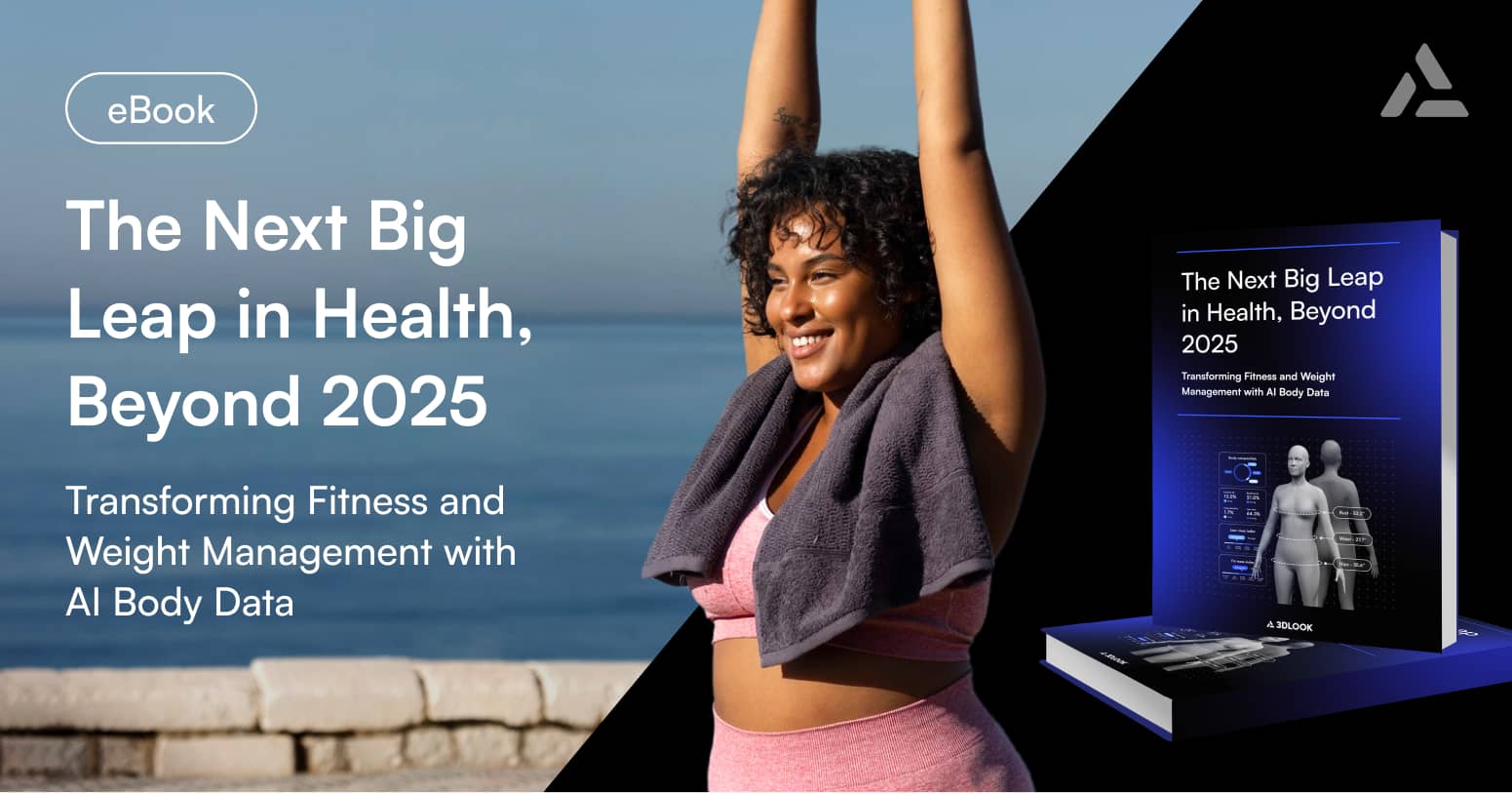
Discover how AI-powered body data is revolutionizing health, fitness, and weight management, setting a new standard for personalization and progress tracking.
Cost Analysis
InBody Investment Structure
InBody represents a significant capital investment with ongoing operational costs:
Initial Investment:
- Equipment purchase: $3,000-$15,000+ depending on model and features
- Installation, setup, and staff training costs
- Space requirements and environmental control systems
- Software licensing for data management (where applicable)
Ongoing Operational Costs:
- Consumables (result sheets, tissues, electrode maintenance)
- Regular calibration and maintenance services
- Staff time for supervised measurements and result interpretation
- Utilities and dedicated space allocation
Revenue Potential: InBody’s premium positioning supports higher pricing ($25-75 per scan), membership tier differentiation, and corporate contract opportunities. The equipment represents a long-term asset with depreciation benefits, but requires consistent utilization to justify investment.
3DLook Subscription Model
3DLook’s software-as-a-service approach eliminates capital investment while providing immediate scalability:
Implementation Costs:
- Subscription-based pricing with flexible tiers based on usage
- No equipment investment or infrastructure requirements
- Minimal integration costs for API/SDK deployment
- Instant scalability without additional hardware or space needs
Operational Advantages:
- Zero consumables or maintenance costs
- Self-service model minimizes staff requirements
- Cloud-based data management included in subscription
- Automatic updates and feature enhancements without additional costs
Revenue Opportunities: The lower barrier to entry enables higher volume measurement capabilities, multiple monetization streams (lead generation, conversion tools, user engagement), and predictable subscription revenue models.
Final Thoughts
InBody excels in controlled clinical environments requiring detailed bioelectrical analysis with extensive research validation, while 3DLook leads in accessibility, scalability, and modern user experiences while maintaining clinical-grade accuracy through IEEE certification.
The choice depends on specific requirements: clinical precision vs. widespread accessibility, controlled environments vs. mobile convenience, equipment investment vs. subscription scalability.
The trend clearly favors solutions that combine accuracy with accessibility. 3DLook’s innovative approach addresses the fundamental limitations of traditional measurement technologies while delivering the precision needed for effective health monitoring in an increasingly mobile-first world.
